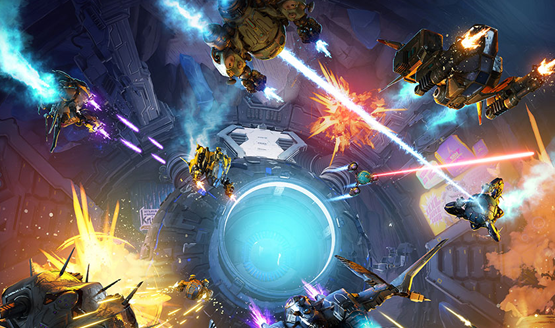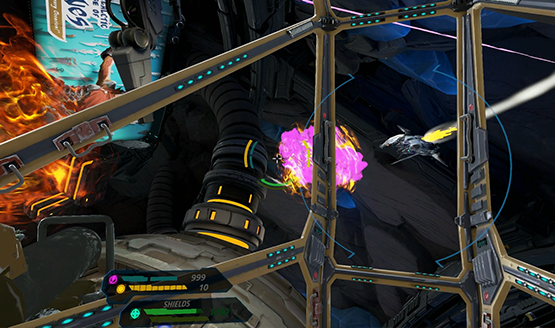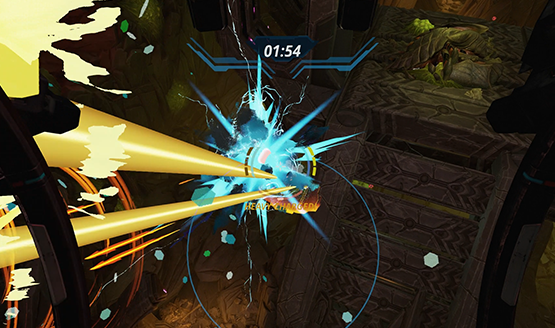PlayStation VR has been searching for its killer app since release, the game that is not only a must-own for all PSVR owners, but also gives PS4 owners a reason to finally take the plunge and get a headset for themselves. This game would push PlayStation VR to its limits with a compelling experience that highlights exactly what’s so great about virtual reality, while providing accessibility and comfort. It may seem that a fast paced, zero gravity, 360 degree shooter wouldn’t find itself in this category (most notably the comfort part), but StarBlood Arena developer WhiteMoon Dreams have crafted a competitive VR experience that could easily be PSVR’s killer app.
Equal parts Eve Valkyrie, Twisted Metal, and Overwatch, StarBlood Arena exudes a polish and style that can be compared to these other games yet is wholly unique in execution. When I previewed the game at PSX I worried about the long term comfort, but noted that the session I played was surprisingly free of any nausea, despite careening through the air, rotating on every axis, and frantically following enemies around or barely escaping certain death. I can now say with conviction that not only did StarBlood Arena stand up admirably to long play sessions, it is one of the most comfortable VR games I have ever played.
A brief tutorial not only went over the controls, but gave an opportunity to get my space legs before sending me into the hazardous frenetic combat that awaits. Brief moments of cautious unease faded quickly, and before I knew it I had hurtled through a number of the single-player gauntlets without ever feeling the need to take of the headset or reorient myself, and this is coming from someone who still gets an uneasy feeling while slowly plodding around the normally oriented world of Robinson: The Journey.
StarBlood Arena combatants will need to forget about the conventional knowledge of up and down, or left and right. Direction is not oriented to the world, but rather to the player as you are granted full 360 rotational and movement in the world. One moment up may be what was previously left, and the next spinning to the right might have you looking down. Learning to lean in to this disorienting style of play comes much faster than you would anticipate with a simple palette of controls. Weapon aiming is handled with head movement independent of ship orientation, and though it can be changed in the menu, look-to-aim really is the best way to play. Speaking of the menu, what you won’t find in the menu is VR comfort options, and though this is usually a negative point in most VR games, for StarBlood Arena it’s a testament to how right they got the player comfort at the outset.
Everything from the way the ship cockpits are designed, to the targeting reticle, and even the subtle blurring at the peripheral help to give players a frame of positional reference while never sacrificing anything in the game. Take Resident Evil 7 for example. While it’s full of comfort options, most of them come at the cost of the horror experience (grid lines, field of view tightening, toggling the smooth turning) so it ends up being a balancing game between virtual reality comfort and getting the full breadth of the experience. StarBlood Arena has comfort baked in at a core level in ways that I can barely comprehend without limiting the gameplay or field of view, and despite the completely disorienting and fast-paced combat, I never once felt a twinge of stomach churning discomfort.
Full of Character
Nine pilots from all over the galaxy come together to compete in deadly combat for fame and credits, with battles being broadcast over the StarBlood Network, sort of like an space version of Twisted Metal. Each character is filled with personality in the gameplay and out. Combat is tight, with everyone bringing different tactics and play styles to the intergalactic table. There are faster weaker ships that specialize in doing a lot of damage from long range, and ships that have forward facing shields intended to get players up close and personal. As I tried out each different character, I had to completely rethink the way that I played. Alice may specialize in doling out a steady stream of damage at mid-range with her guns and lingering explosive blasts, but Dregg’s weak ship and slow firing, yet powerful sniper style shot means he needs to stay at long range to be effective.
Though some abilities may cross over character to character, they all have a distinct style. Alice and Tik Tak Toh may share the lingering nuke blast, but Tik Tak Toh does away with heavy cannon fire in favor of have a shield that absorbs damage done to the front of the ship. It’s not just gameplay style where characters differ though. Visually it’s fun to see how each character controls the ships from first person view. The angry robot, Gundo, shares a ship style with Dregg, and they use their hands on large control orbs, while with Tik Tak Toh, two of the three aliens that make up this character can be seen controlling each joystick. The personalities of the characters shine through particularly well in the comments they make during matches as a response to certain actions, like getting a kill stolen by another player or finally getting a kill after a streak of deaths. Check out the character gallery below for the complete readout of each one.
At launch, StarBlood Arena comes with four main game types with up to eight players possible in each one. Carnage is a free for all game mode, a brutal deathmatch where it’s each man, woman, robot, or alien for themselves. Team Carnage is obviously the team based deathmatch, and both of these get interrupted by random event modifiers at about the halfway point. You might suddenly find yourself surrounded by electro-spheres or turrets in the arena, or maybe there are now repair drones floating around to help you out of a pinch. These events can turn the tide of a battle very quickly and provide a bit of variance to the standard deathmatch mode.
Gridiron is StarBlood Arena’s sportsball game. Grab the ball and shoot it into the goal for a single point, or risk it all at drive it straight through for three. Instead of dying and respawning, draining shields simply means you sit disabled for a few seconds while you wait for the ship to repair itself, watching as the enemy that you failed to kill takes the ball to your goal for massive points. Finally there is the cooperative Invaders mode, where up to four players must defend an objective from waves of enemies, a simple concept perhaps, but one that works very well StarBlood Arena’s unique…umm, arena. If you don’t want to take the fight online, you can play Invaders alone, or test yourself in each character’s Burn Circuit, a series of ten matches versus AI bots with increasing difficulty that will ultimately reward players with golden skins for their ships and characters. The top tier circuits at insane difficulty will test the fiercest of players, so the golden skins will be a testament to a player’s acumen with that character.
There Will Be Loot
Of course what would a competitive shooter be without loot to earn and ways to customize your characters and ships? As you level up each specific character, you’ll earn ship mods that impact gameplay. Some need to be manually activated and have cooldowns, like reducing incoming damage by 25% for 20 seconds, and others offer both pros and cons, like faster lock on time for missiles but reducing their damage.
Though these little changes can really impact your gameplay, I never felt completely helpless when starting with a new character that had no mods unlocked. In fact, in some cases I chose not to even put mods in certain slots, because the alternatives were getting me killed. One such mod keeps opponents painted when I shoot them with my main gun, but at an increased ammo cost. I found myself constantly on ammo cooldown and never really using the painting all that much, so I removed the mod and my kill count drastically increased.
Finally there are the visual customizations that can be earned, from pilot skins to ship attachments and dashboard toys. You read that right. For me, Alice’s ship currently has an adorable little dog in the cockpit. Some special unlocks can be earned by meeting specific requirements (like the golden skins), but most of them will come from loot containers that can be purchased from the StarBlood Network hosts using in game currency. Let me be clear on that. At this time there isn’t a hint of microtransactions. All in game cosmetics are earned and unlocked through gameplay by purchasing random loot boxes using in game credits, not real money. Though what lack of any microtransactions means for future DLC support is anyone’s guess. Maybe they’ll take a page out of Rocket League’s book and offer a selection of both free and paid.
The one annoyance that I’ve found with StarBlood Arena has nothing to do with the gameplay at all, but with the way customizations and unlocks are organized. When you get an item from a container, it fails to tell you what it is for. Is it a ship topper (yes, you can put hats on your ship)? Is it a paint scheme? Is it a character skin? It takes going through each character and ship customization slot, and scrolling through long lists to find each single thing. A little more clarity on what each unlock is for upon earning it, as well as a better organization of the customization options would be a welcome future update, but I’m happy that my issues with the game don’t lie anywhere in the actual meat of what StarBlood Arena is.
StarBlood Arena is VR’s Overwatch. Oozing with personality, it explodes with a style and grace that one might not expect to come from the scrappiest corners of the galaxy. The tight, frenetic combat takes some standard shooter ideas and literally turns them on their head, putting you in the pilot’s seat in a way only possible with virtual reality. If you haven’t taken the plunge, StarBlood Arena is a damn good reason to get PSVR. If you already own one, I’ll see you in the arena.
StarBlood Arena review code provided by publisher. Reviewed on PSVR. Multiplayer reviewed on live servers prior to release date. If there are any notable changes or issues reflected after release, this review will be updated to include them. For more information on scoring, please read our Review Policy.
-
Tight and addictive combat
-
Varied character gameplay styles and personality
-
No discomfort despite extremely disorienting gameplay
-
A feather in PSVR's cap
-
Organizational issues with cosmetic unlocks
StarBlood Arena Review
-
Alice the Bombardier
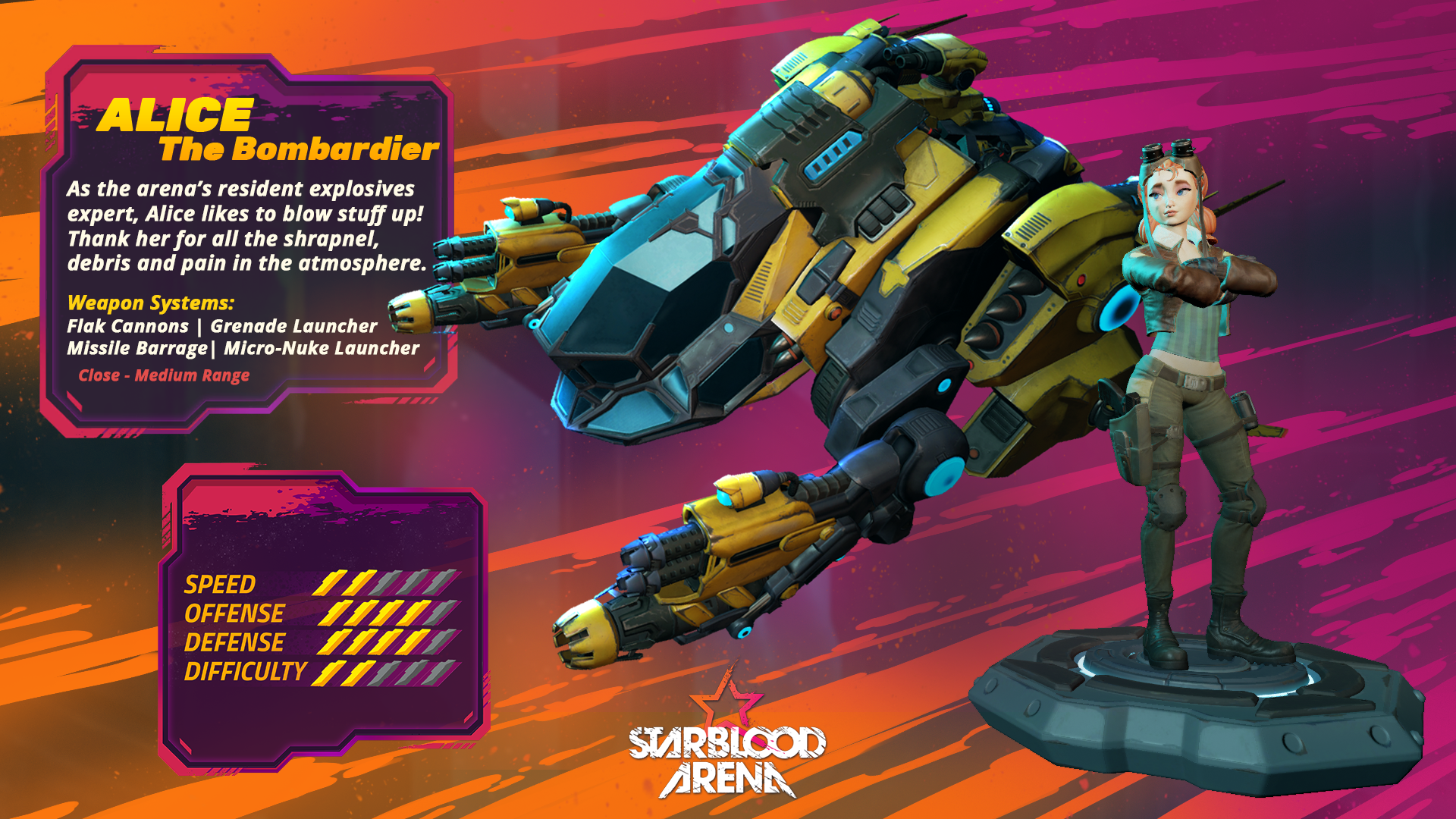
-
Apollonia the Hunter
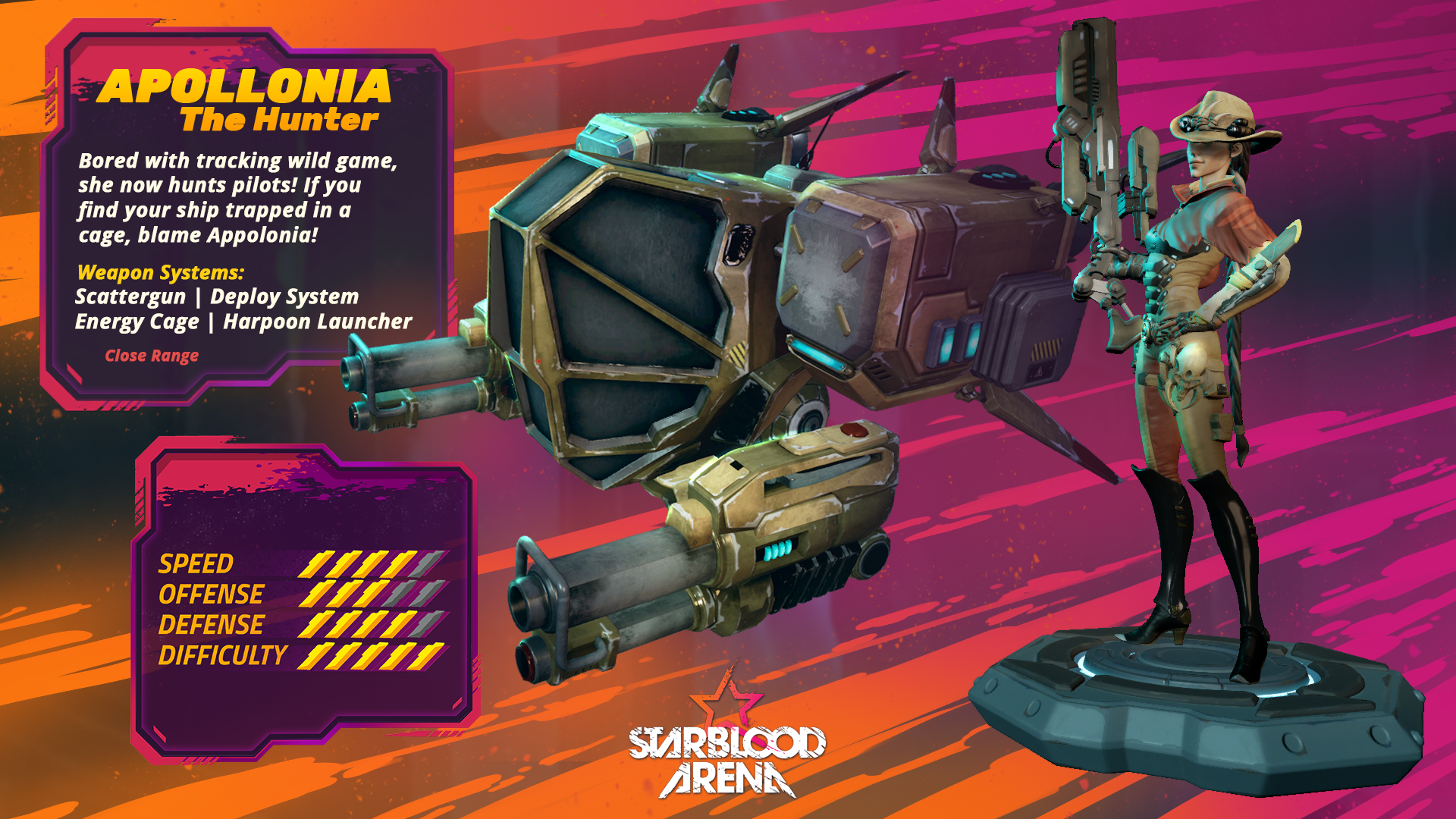
-
Baron the Deathnought
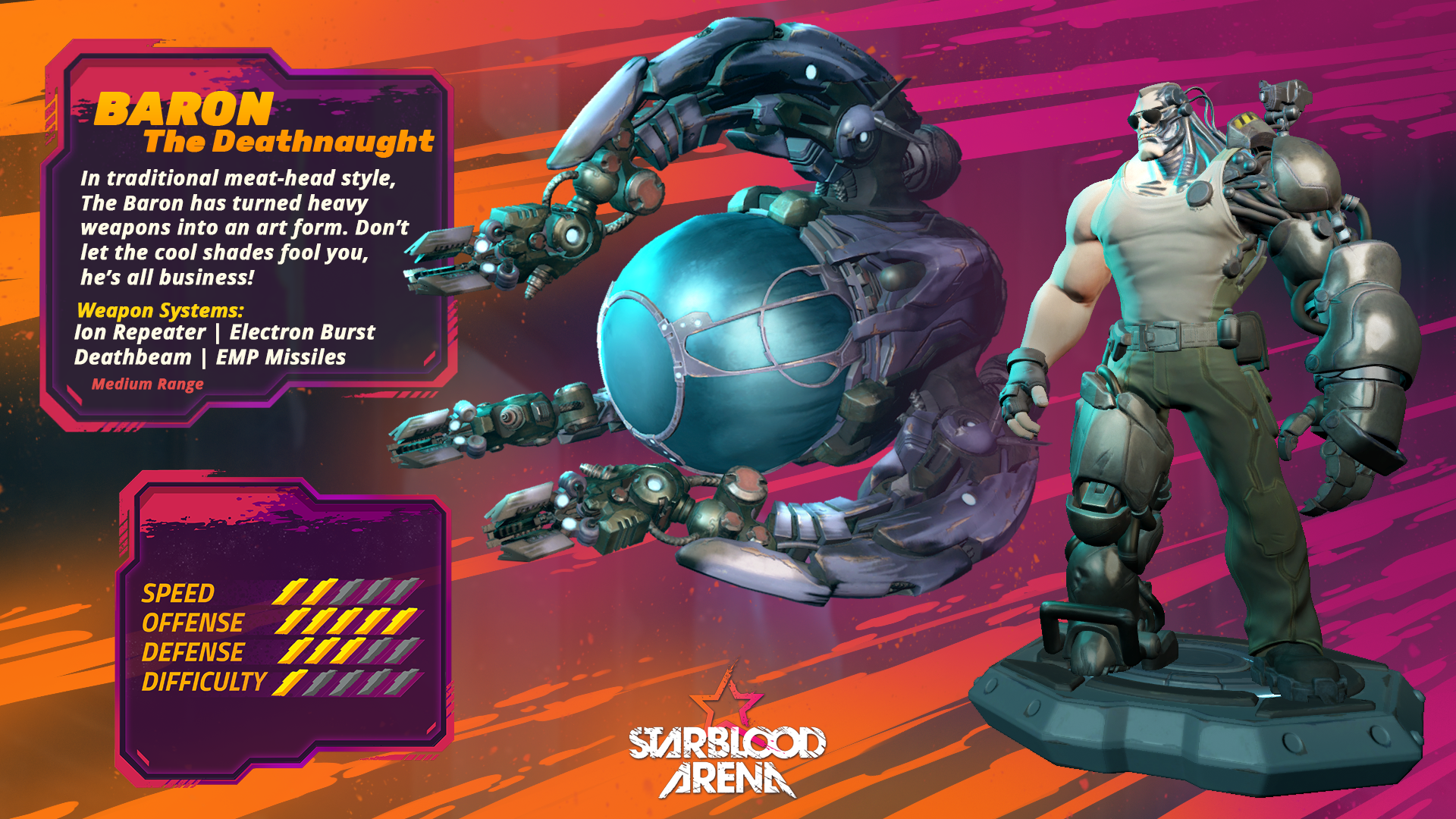
-
Blade the Assassin
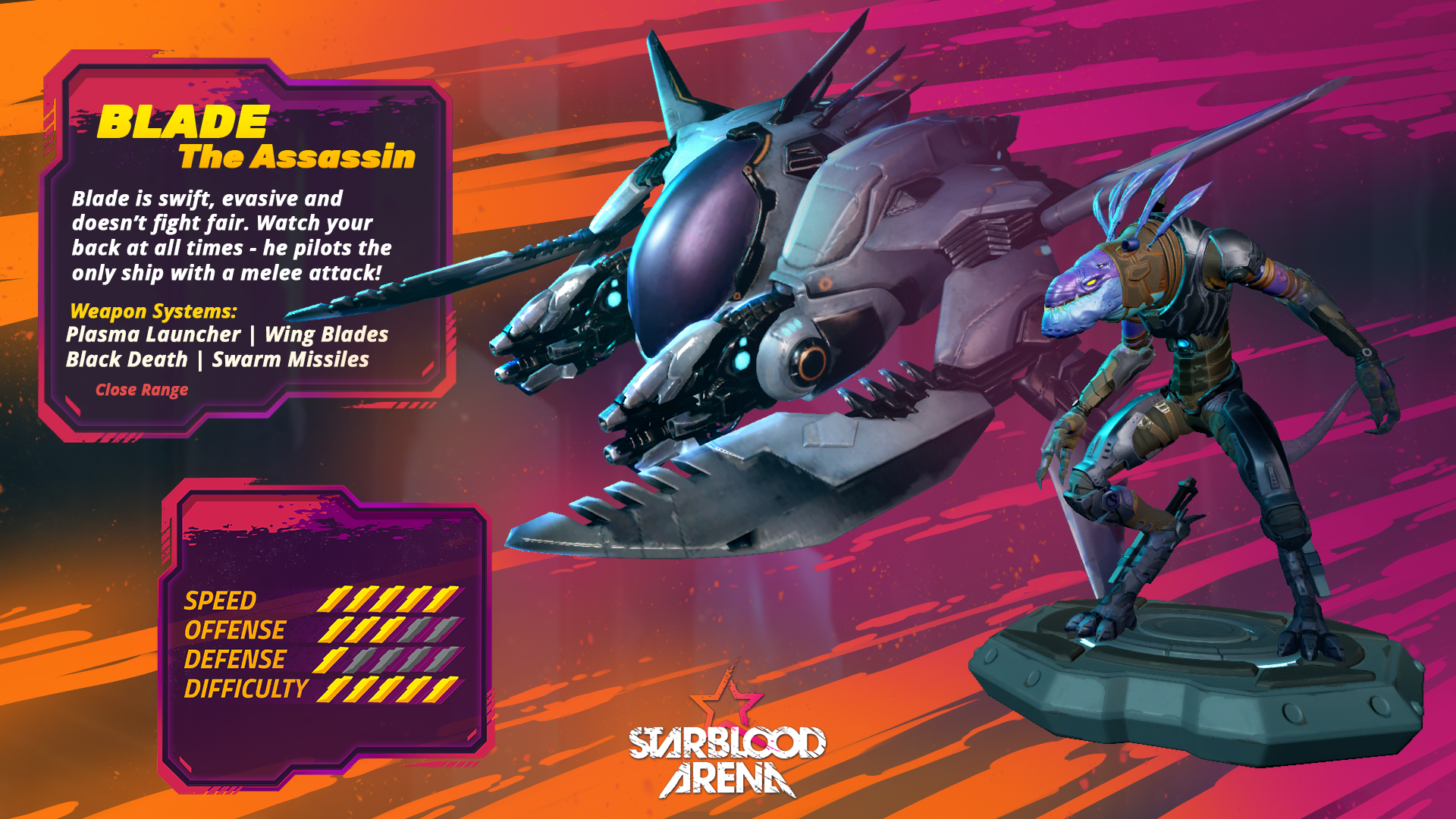
-
Buck the Berserker
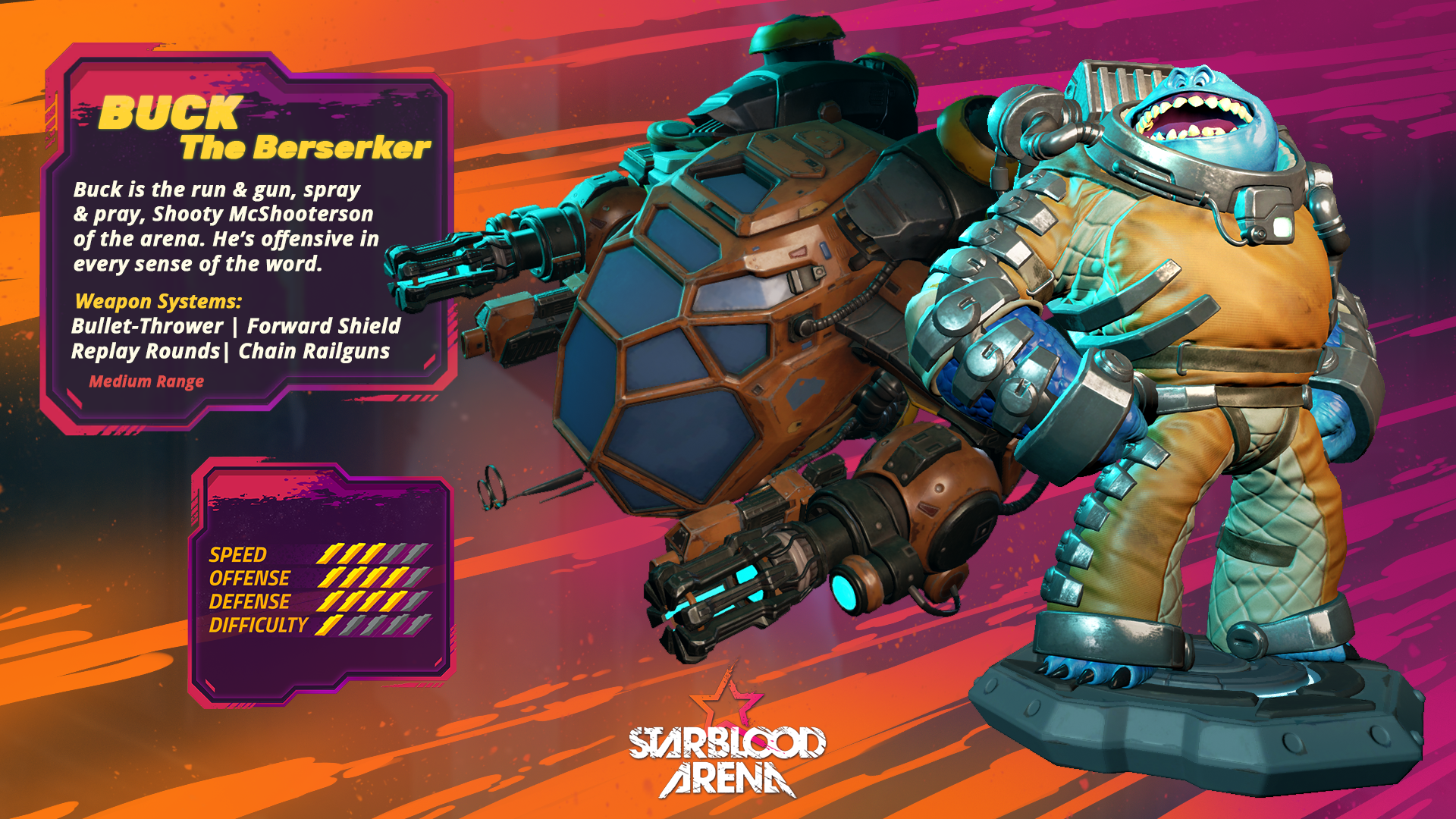
-
Dregg the Sniper
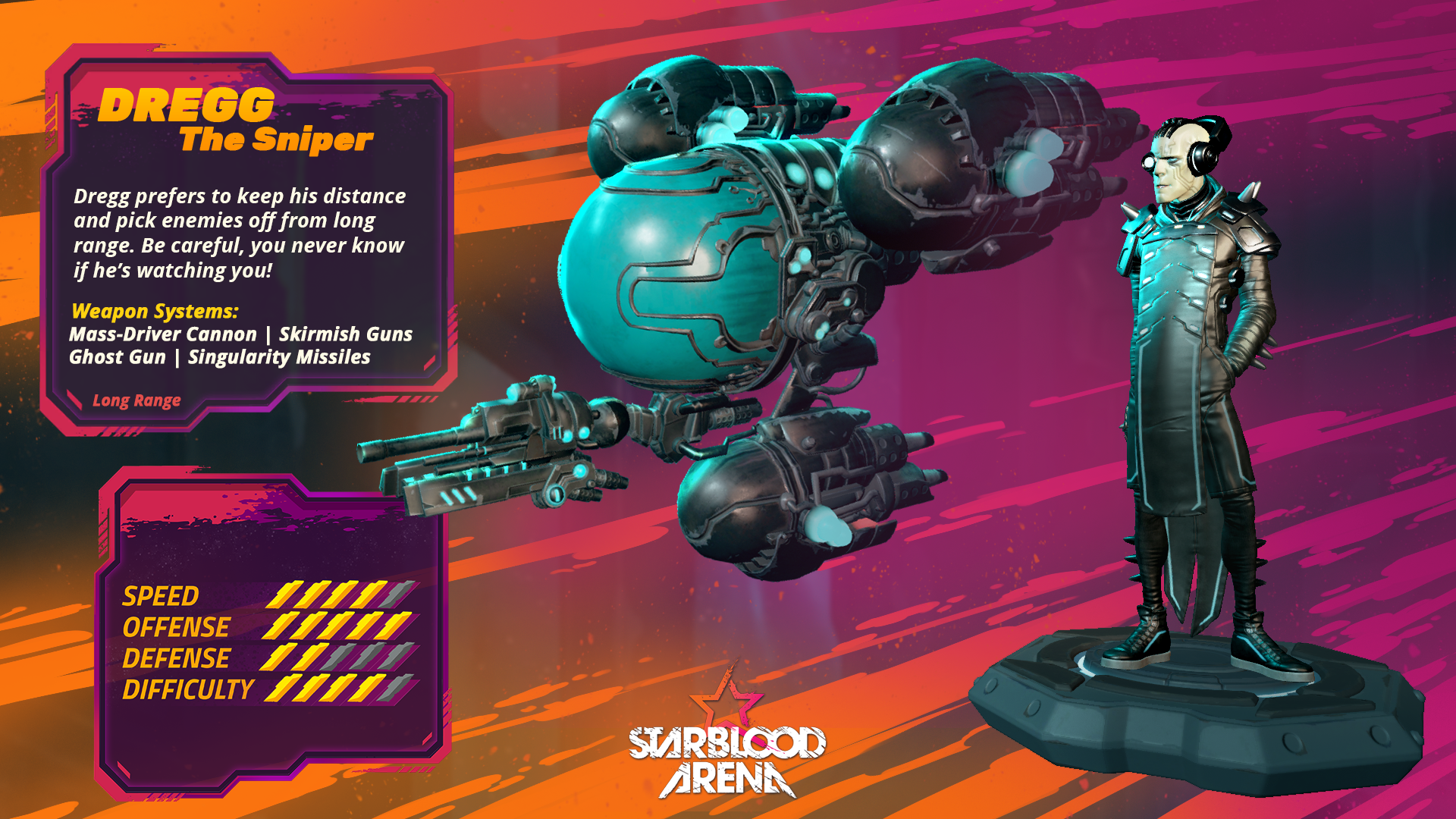
-
Elsa the Soldier
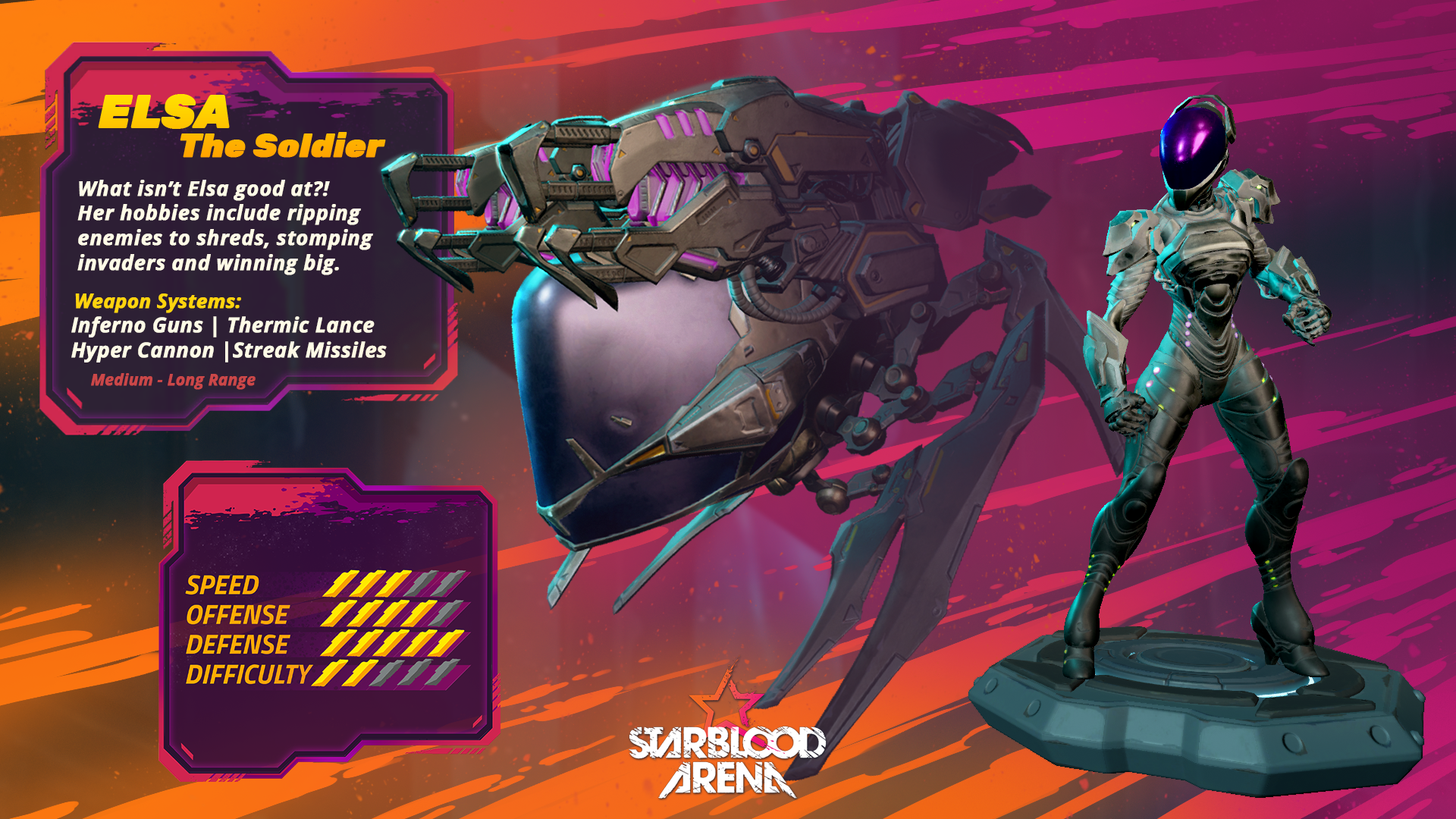
-
Gundo the Gunship
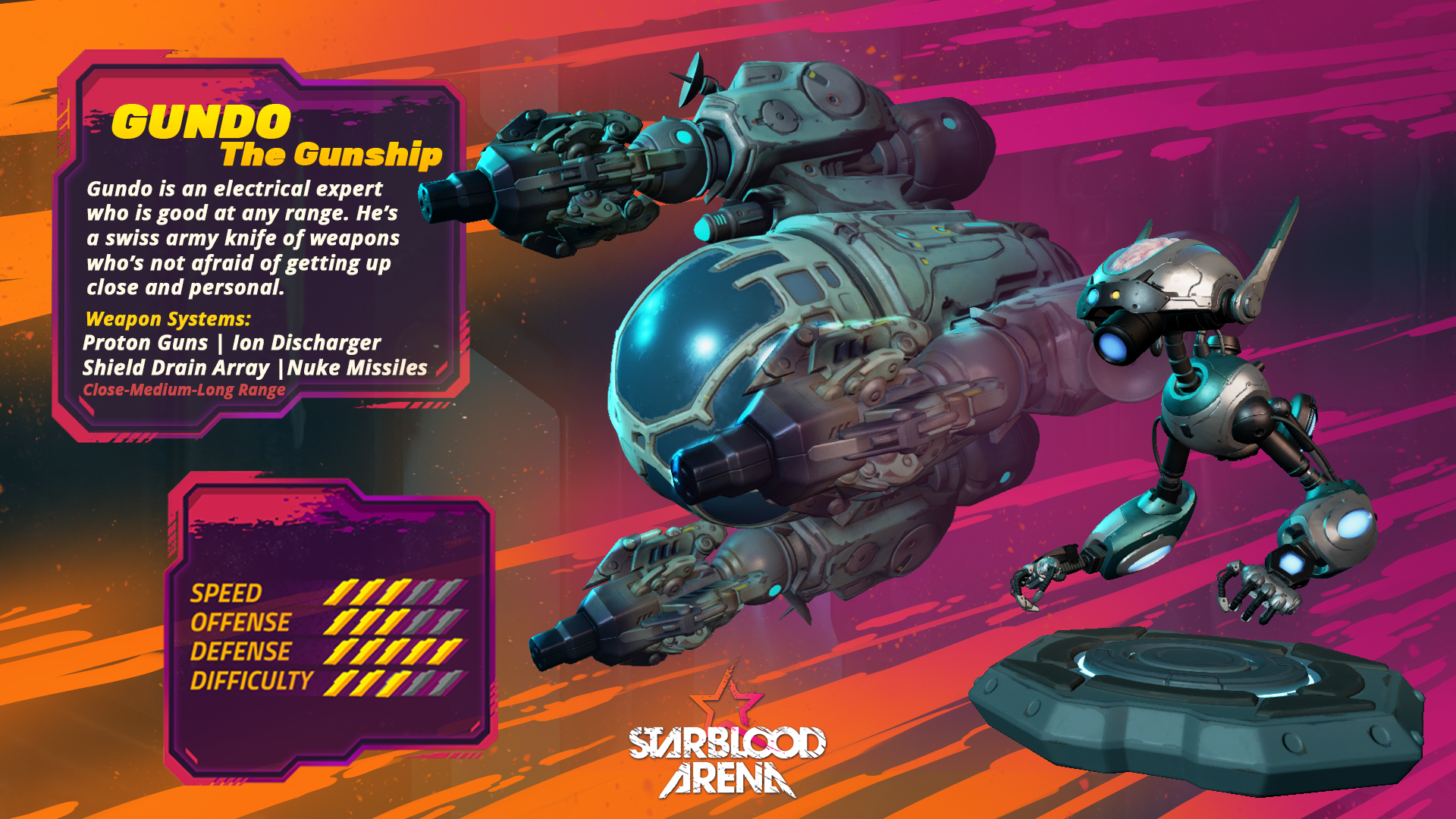
-
Tik Tak Toh the Tank

